12 Top Border Plants That Help Stop Weeds in Their Tracks
Creating a clean, neat garden border is a great way to enhance the look of your outdoor space while keeping weeds at bay. Choosing the right edging plants can help define your garden beds, pathways, and lawn areas without much effort. These low-maintenance plants not only add beauty but also provide natural weed control, making your garden easier to care for. Whether you’re looking for fragrant flowers, attractive foliage, or hardy groundcovers, there are plenty of options to suit your garden’s needs. Keep your borders tidy and weed-free with plants that are both functional and aesthetically pleasing.
This post may contain affiliate links, which helps keep this content free. Please read our disclosure for more info.
Catmint (Nepeta)
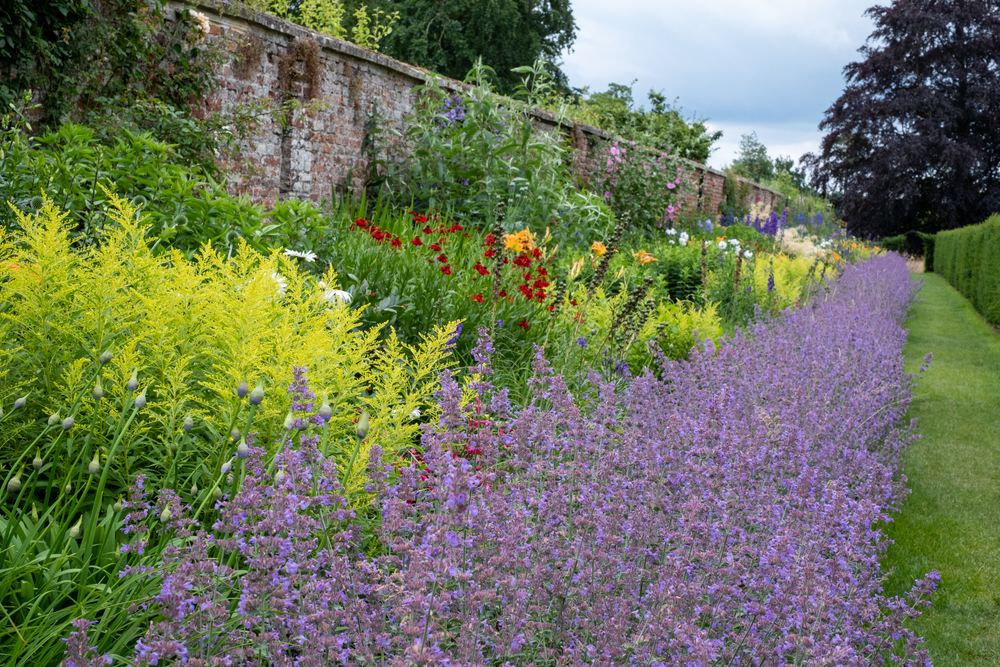
Catmint, with its aromatic leaves and lavender-blue flowers, is a popular choice for borders. It grows well in a variety of soils and thrives in sunny locations, making it ideal for edging. The plant’s dense, bushy growth helps prevent weeds from taking root, keeping the area clean and tidy. Its fragrant foliage adds another layer of appeal, attracting pollinators like bees and butterflies.
This low-maintenance plant requires minimal care once established, making it perfect for gardeners who want beauty without constant upkeep. Catmint also tolerates drought, so it’s a resilient choice for those looking to save on watering. With its long blooming period, it offers a long-lasting color to borders, staying attractive from spring through fall.
Sweet Alyssum
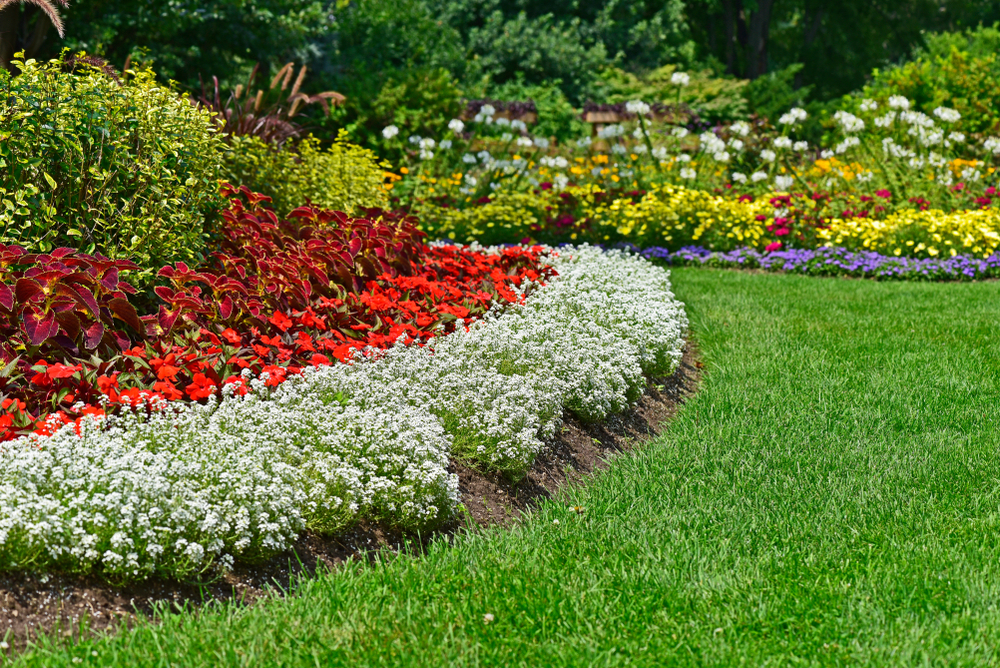
Sweet alyssum is a charming and fragrant edging plant that produces delicate white, purple, or pink flowers. Its spreading nature makes it ideal for forming a dense carpet along borders, suppressing weeds effectively. The plant’s low growth habit means it won’t overtake neighboring plants, maintaining a neat and controlled appearance. Sweet alyssum thrives in full sun or partial shade, and it’s very forgiving when it comes to soil conditions.
Another benefit of sweet alyssum is its ability to attract beneficial insects like pollinators and pest-controlling ladybugs. It is also easy to grow from seed and thrives in containers or along garden edges. Due to its compact size, sweet alyssum is great for creating an edge that won’t grow too tall and obstruct your view of other plants.
Lavender (Lavandula)
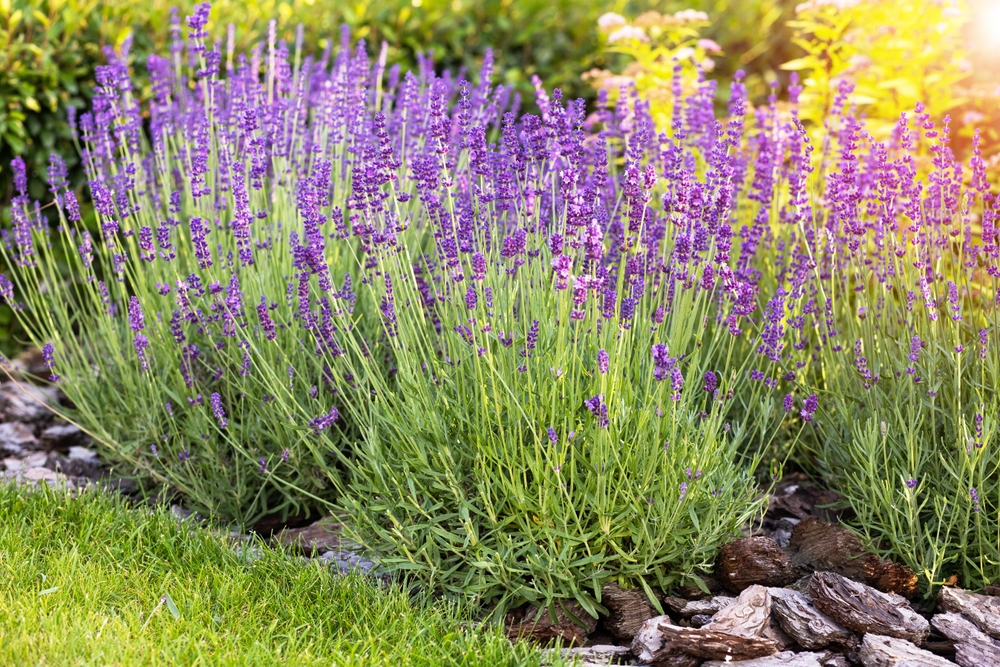
Lavender is not just a beautiful plant; it also serves as a fantastic weed barrier for garden borders. Its silvery-green foliage and fragrant purple flowers make it both a decorative and functional choice. Lavender thrives in well-drained soil and full sun, and once it is established, it requires minimal care. Its compact form and dense growth habit help to create a tidy edge, which keeps weeds from infiltrating.
In addition to its beauty, lavender attracts pollinators like bees and butterflies, adding life and movement to your garden. Its aroma can also provide a pleasant scent throughout your outdoor space, creating a soothing atmosphere. As a bonus, lavender is drought-tolerant, which makes it a perfect choice for low-water gardens.
Creeping Thyme (Thymus serpyllum)
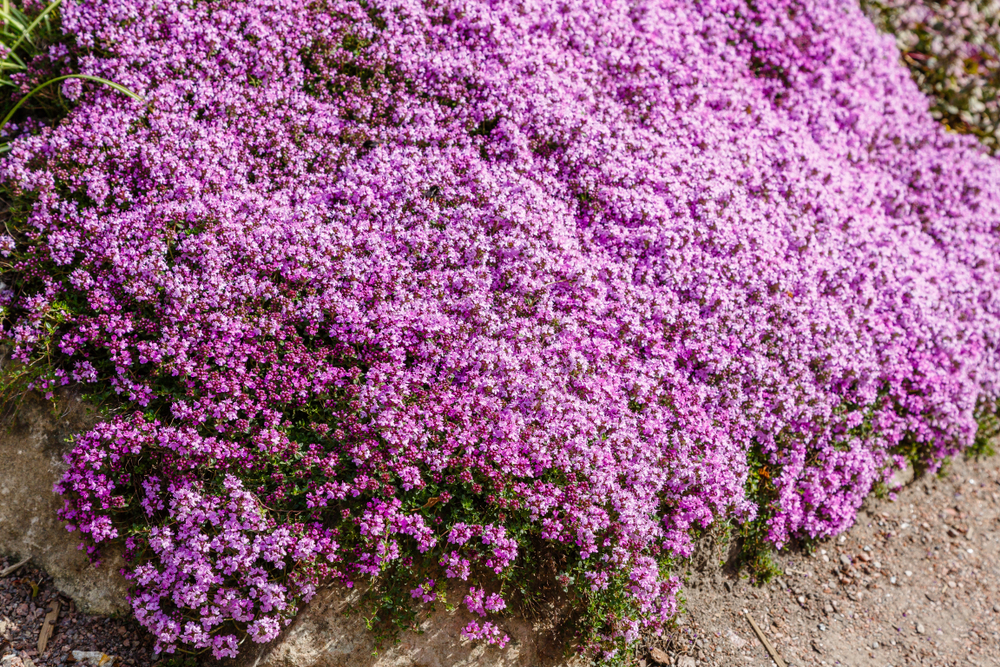
Creeping thyme is an excellent plant for forming a fragrant, weed-blocking border. It grows low to the ground and spreads quickly, creating a dense mat that keeps weeds in check. This hardy perennial thrives in full sun and well-drained soil, making it perfect for sunny borders or walkways. Creeping thyme also produces tiny purple or pink flowers in summer, adding subtle color to the landscape.
Its small leaves release a pleasant scent when stepped on, making it an ideal choice for garden paths or edging near seating areas. Creeping thyme is also highly drought-tolerant, so it requires minimal watering once established. Its low-growing nature means it won’t interfere with the rest of your garden, and its ability to spread easily helps fill in gaps that might otherwise allow weeds to grow.
Boxwood (Buxus)
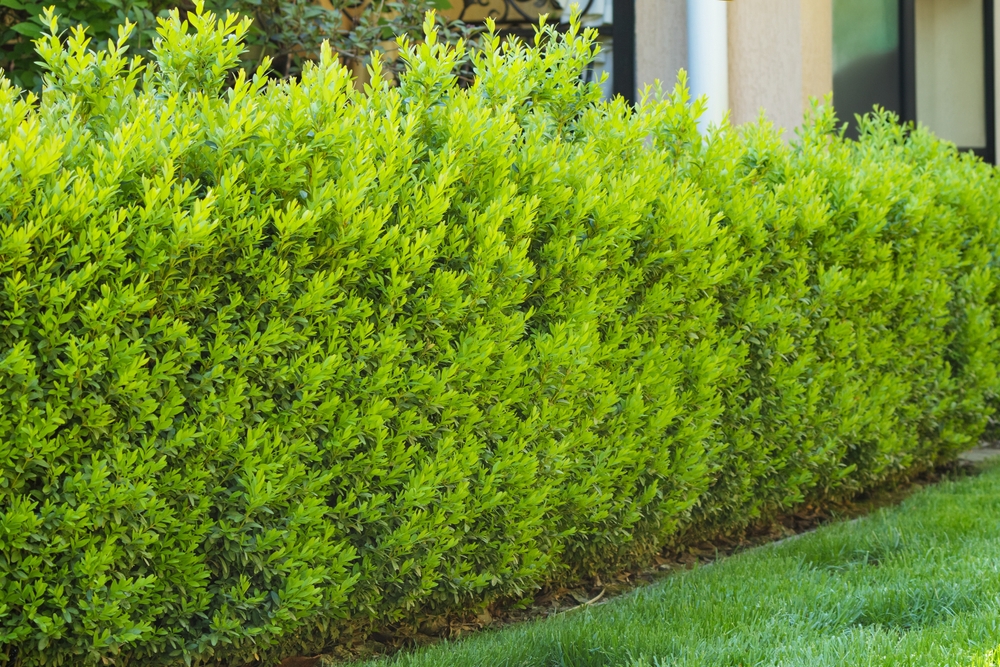
Boxwood is a classic choice for edging due to its dense foliage and ability to maintain a neat, uniform shape. It can be easily trimmed into a variety of shapes, allowing you to create a clean, structured look around flower beds or garden paths. Boxwood is versatile and can thrive in a variety of soil types, making it adaptable to different growing conditions.
As a slow-growing shrub, boxwood requires little maintenance once it is established. It creates a solid barrier that effectively keeps weeds at bay while maintaining an attractive appearance throughout the year. In addition to its functional use, boxwood provides a timeless, formal aesthetic, making it perfect for traditional gardens or more structured landscapes.
Sedum (Sedum spp.)
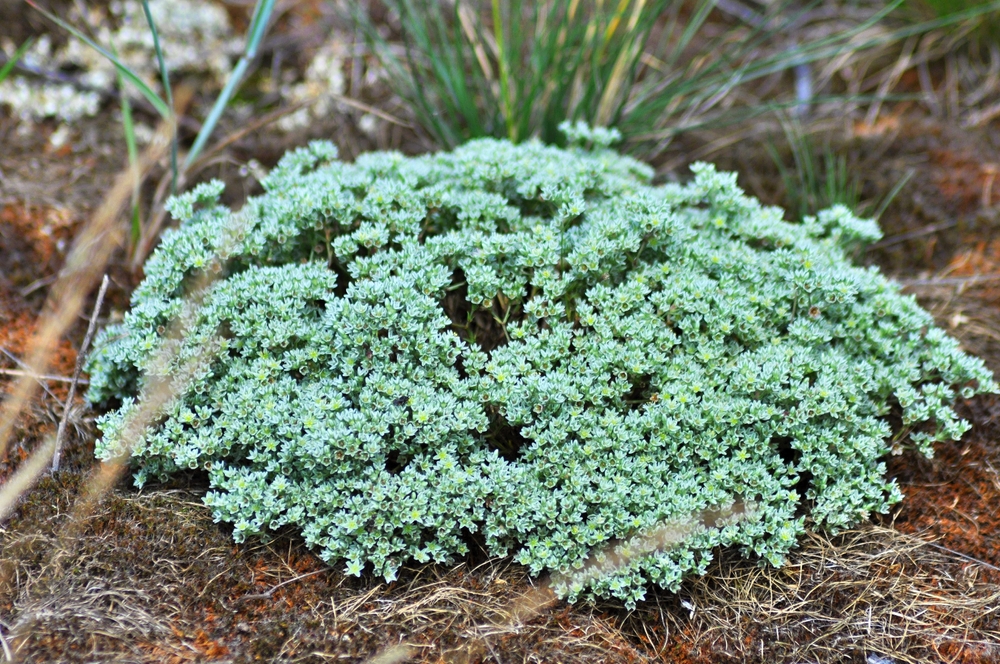
Sedum, also known as “stonecrop,” is a tough, low-maintenance perennial that can thrive in many types of soil, even poor or rocky conditions. With its fleshy leaves and star-shaped flowers, it creates a lovely edging plant that can resist weeds. Sedum grows low to the ground and forms dense clusters, effectively crowding out unwanted plants.
It is especially great for sunny borders and drought-prone areas, as sedum is highly tolerant of dry conditions. The plant’s ability to thrive with minimal water and its attractive, vibrant flowers in late summer and fall make it a favorite for gardeners looking for a hardy and beautiful option. Sedum also requires very little pruning, making it easy to maintain.
Heuchera (Heuchera spp.)
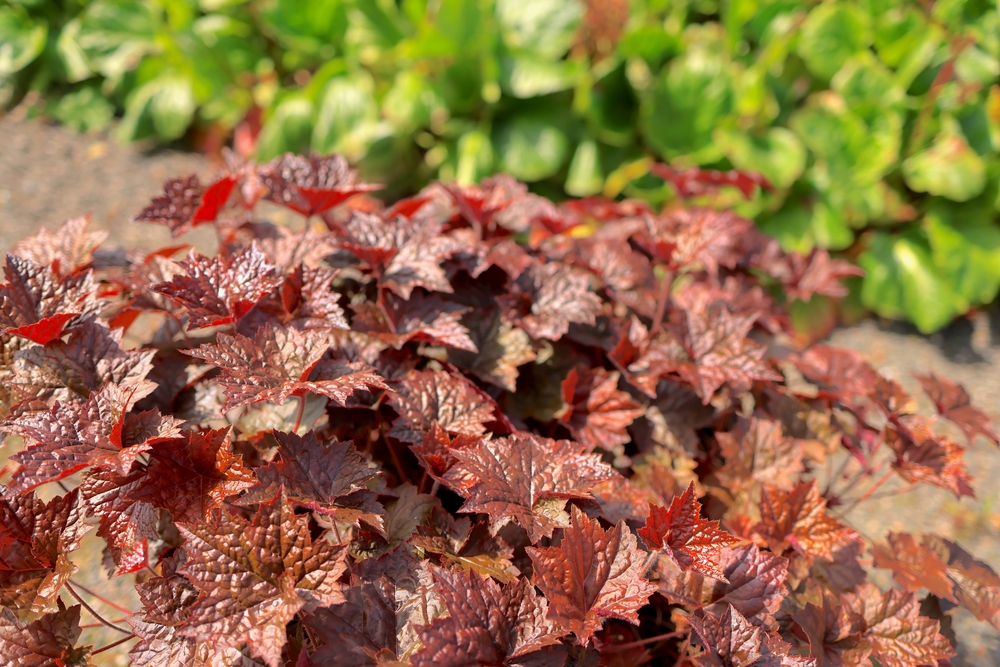
Heuchera, or coral bells, is known for its vibrant foliage, which comes in a range of colors from deep purple to lime green. This perennial forms low, dense clumps that make it perfect for edging garden beds. The foliage is not only beautiful but also helps suppress weed growth, ensuring that your borders stay tidy.
Heuchera thrives in partial shade to full sun, and it is relatively easy to care for once established. Its ability to grow in various soil conditions makes it adaptable to different landscapes. Additionally, heuchera’s delicate flower spikes add an extra layer of beauty without overpowering other plants in the border.
Ornamental Grass (Carex spp.)
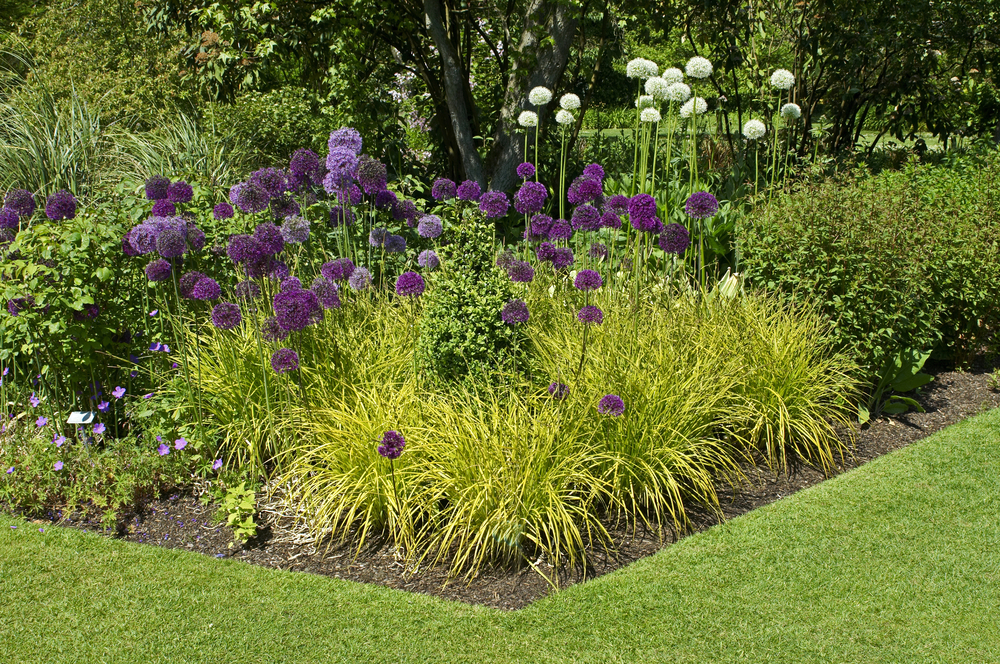
Ornamental grasses like Carex are a fantastic option for creating a clean and low-maintenance border. Their fine-textured foliage and graceful arching form help to define garden edges without overwhelming the surrounding plants. Ornamental grasses thrive in a variety of soil types and sun conditions, making them versatile additions to many garden styles.
These grasses are great for creating a natural, flowing border that blocks weeds while offering a soft, textured look. Some varieties, like blue fescue, even provide year-round interest with their striking foliage. Once established, ornamental grasses are drought-tolerant and require minimal maintenance, making them an excellent choice for busy gardeners.
Japanese Forest Grass (Hakonechloa macra)
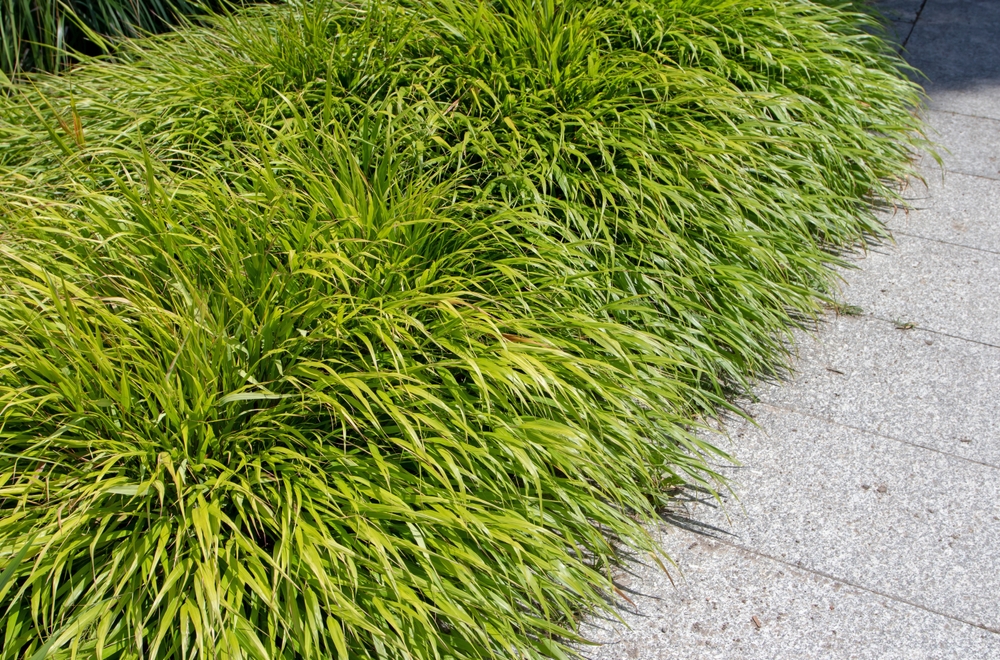
Japanese forest grass offers a soft, cascading look, making it a great edging plant for more shaded areas. Its bright green or golden-yellow foliage provides a pop of color, and it grows in clumps that effectively block weeds. The plant’s delicate, arching leaves create a beautiful, flowing appearance along garden borders.
Japanese forest grass does well in moist, well-drained soil and partial shade, making it a great choice for woodland gardens or areas with less direct sunlight. This plant requires little maintenance, and its ability to spread slowly means it won’t take over other plants. It’s an excellent option for adding texture and movement to garden edges.
Hosta (Hosta spp.)
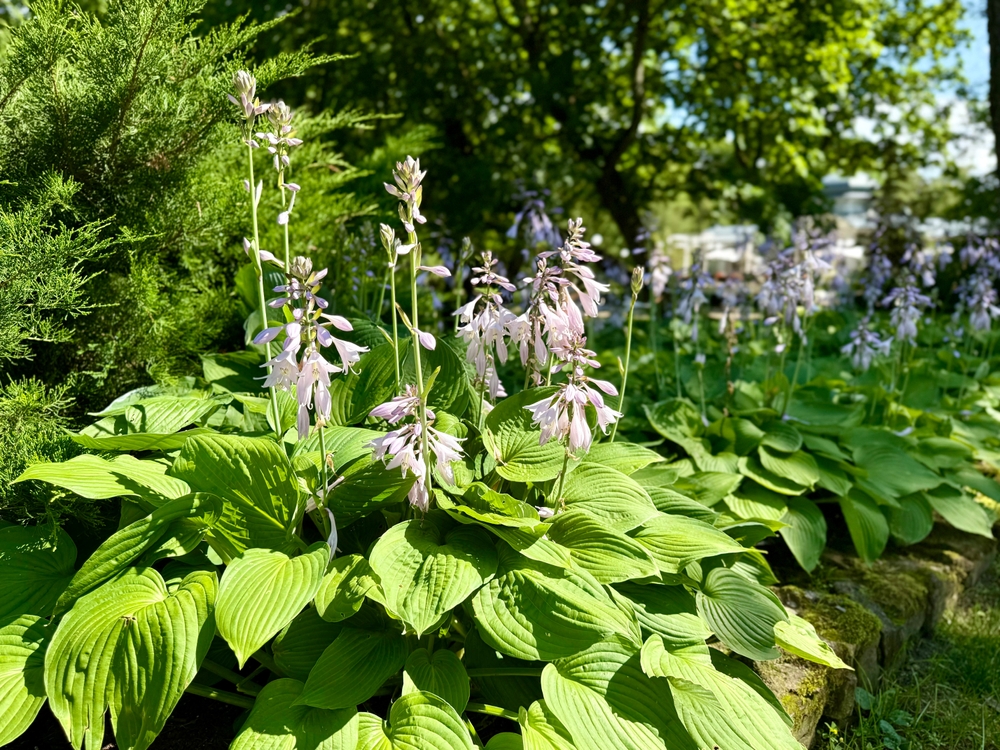
Hostas are beloved for their shade tolerance and attractive foliage. These plants grow in dense clusters, creating a lush, thick border that can crowd out weeds. Hostas come in a variety of leaf colors and sizes, allowing gardeners to choose the perfect variety for their borders.
They thrive in partial to full shade and prefer moist, well-drained soil, making them a great option for shaded areas or under trees. Hostas also add elegance to your garden with their attractive leaves and occasional flower spikes. They are easy to grow and require minimal maintenance, making them an ideal choice for gardeners seeking low-maintenance options.
Creeping Jenny (Lysimachia nummularia)
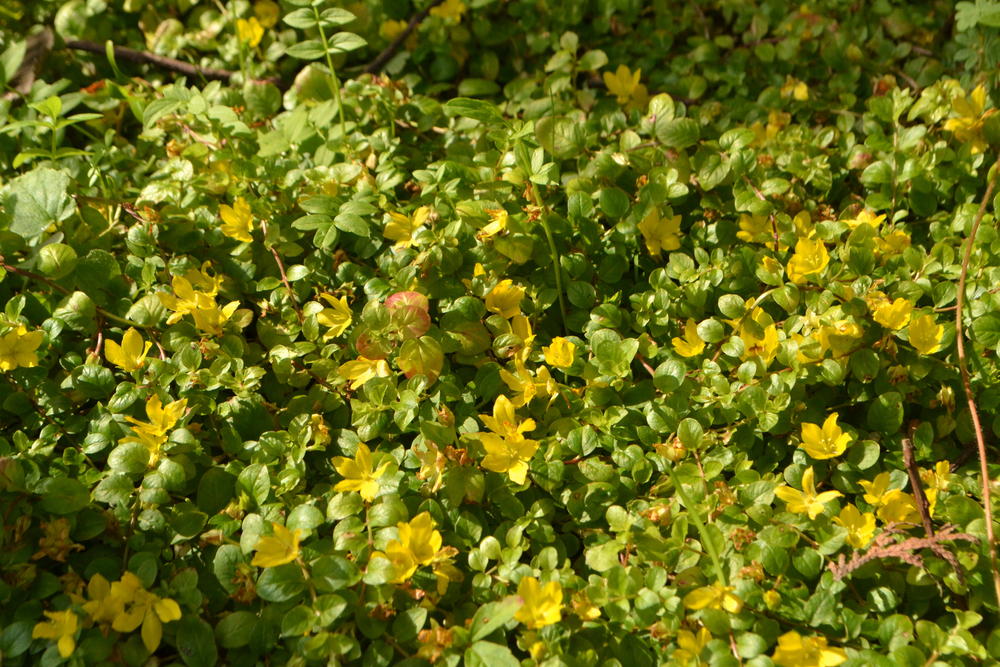
Creeping Jenny is an attractive, fast-growing groundcover that spreads quickly, making it an excellent choice for forming weed-free borders. Its vibrant green foliage turns golden yellow in the fall, providing seasonal interest. Creeping Jenny thrives in both sun and shade, making it versatile for various locations in your garden.
The plant’s low-growing nature ensures it won’t overpower other plants, and its dense growth helps prevent weeds from taking root. Creeping Jenny also tolerates wet conditions, making it perfect for moist, well-drained soils or areas prone to occasional waterlogging. Its spreading habit creates a neat, consistent border with minimal effort.
Dwarf Mondo Grass (Ophiopogon japonicus)
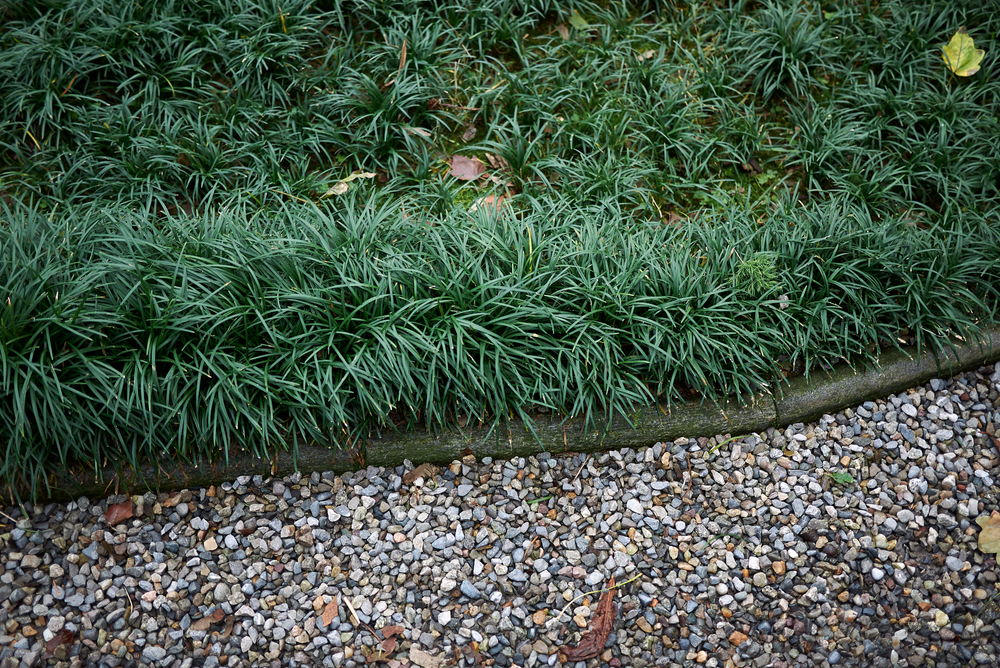
Dwarf mondo grass is a compact and dense evergreen plant that forms a low, lush carpet perfect for borders. It creates a neat, tidy appearance and is effective at blocking weeds from growing along garden edges. This grass is slow-growing and requires minimal care once established, making it ideal for those seeking a low-maintenance solution.
Dwarf mondo grass thrives in both sun and shade, and it is tolerant of various soil types. Its dark green foliage adds contrast to other plants, and its ability to stay compact makes it perfect for small spaces. This grass is an excellent choice for edging along walkways, garden paths, or flower beds.
This article originally appeared on Avocadu.
